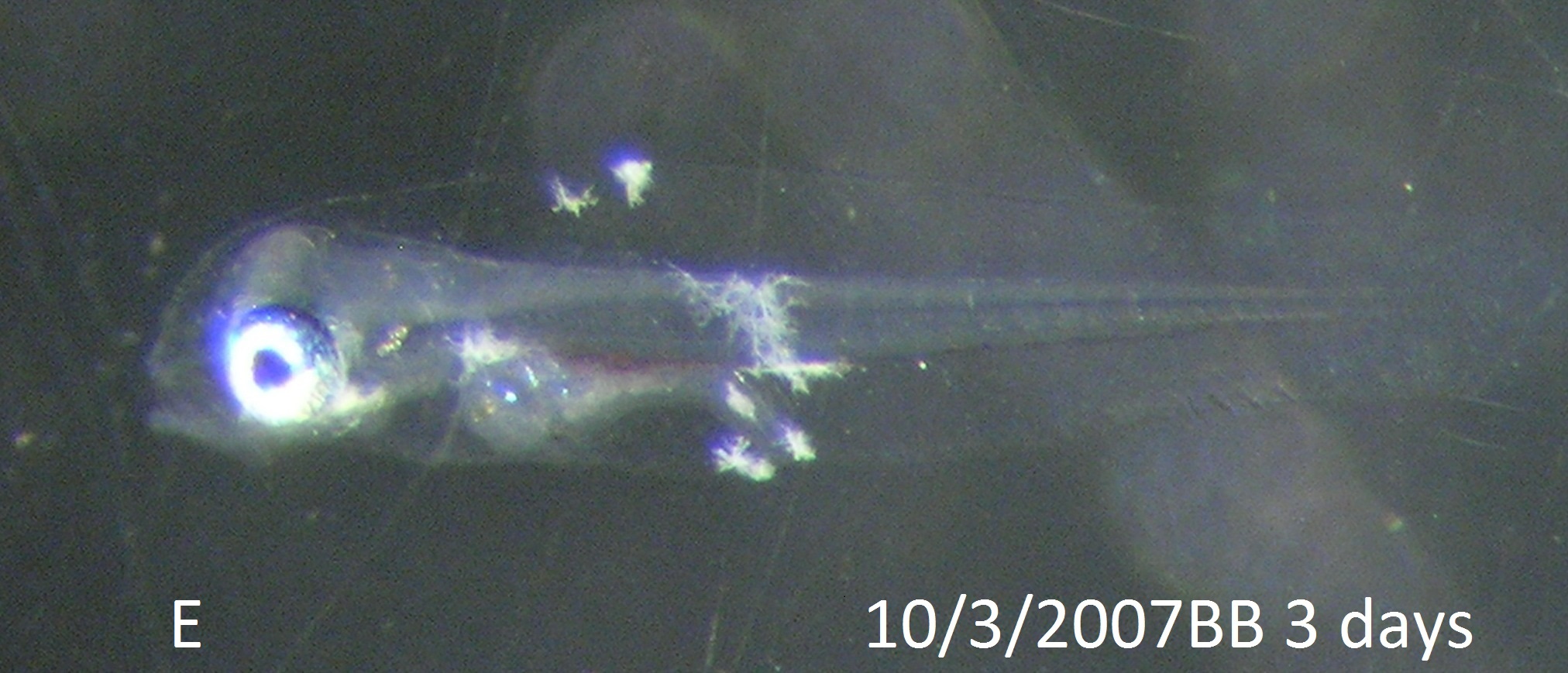Acanthuridae: L III E10
Zebrasoma gemmatum (Valenciennes, 1835)
Spotted tang






|
Egg diameter in µm |
Number of oil globules |
Diameter of oil globule in µm |
Yolk texture |
Perivitelline space |
Position of oil globule at hatch |
Gut length at eye- pigment stage |
Myomeres |
|
665-770 |
1 |
150-190 |
clear |
narrow |
stern |
50% of NL |
24 |
Egg: This egg has a yellow-amber oil globule, and the only pigment on the developing embryo, is tiny, pale yellow dots, mostly in the tail, just before hatching. Incubation is about 25hours.
Larva: The 1-day larva has 4 blotches of whitish yellow pigment along the notochord, from eyes to midtail (B), and may also have a line dorsally on the finfold edge, similar to Plate D1. A dense patch of red-brown pigment forms over the gut later (C, D & D1). 3-4 day larvae develop an unusually serrate outer edge to the finfold, particularly the lower edge midtail, with some "spicules" almost as long as pupil diameter. B: 1 day, C: 2 days, D & D1: 4 days, E: 3 days(25°C).
The egg is rather epinepheline in appearance, and the larva has epinepheline and anthiine features (see KIIIC1, KIIIC1A and KIIIC2, LIIIB4, LIIID2). But 8 larvae hatched from this egg, have matched the barcode of a single Zebrasoma gemmatum collected on the Aliwal Shoal (BOLD).

| linked samples | Offshore | Inshore |
| Eggs | 164 | 13 |
| Hits | 8 | 7 |
This egg was seldom seen off Park Rynie, but the sparse records show a summer spawner (blue graph). It was not seen in the DHM samples. The Park Rynie linked samples showed a predominance of eggs offshore (93%), suggesting spawning occurs outside the 50m contour. See Section 7.3 and Table 1 of the Introductory Notes, for more information on the linked samples.